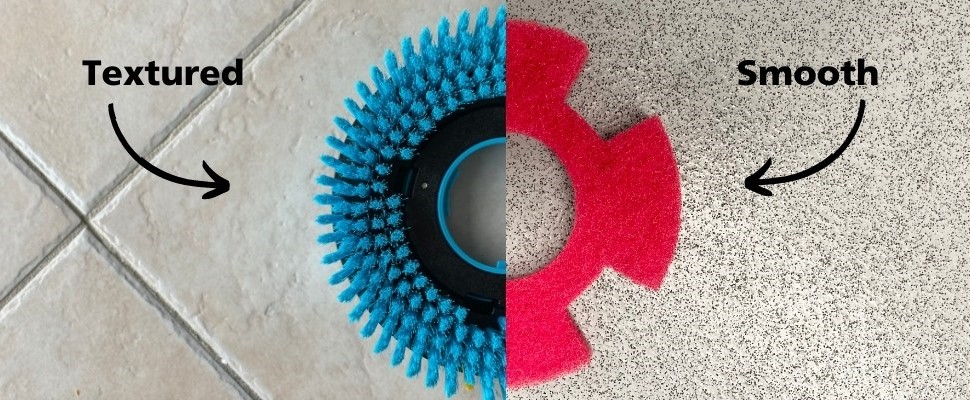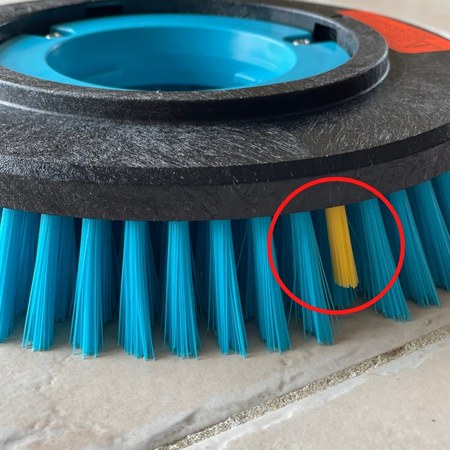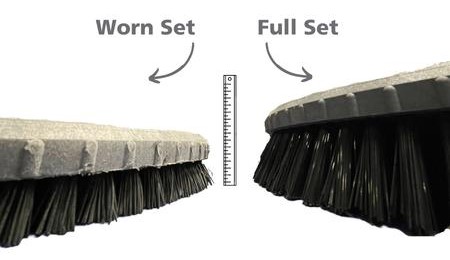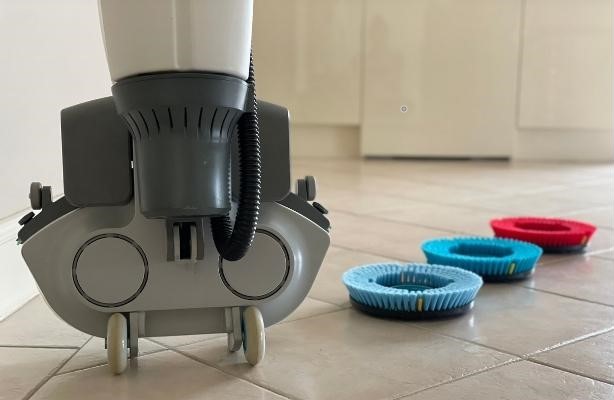The challenge is understanding which option is most suitable to ensure maximum cleaning performance without damaging the floors. Different brushes and pads have varying levels of aggressiveness and abrasiveness to match the floor material being cleaned. Almost all floor scrubbers for sale come standard with a basic cleaning pad or brush, but at times a more specific solution may be required to achieve the results required.
Understanding whether pads or brushes are more suitable for cleaning floors is one of the most frequently asked questions to our team, so we have put together a guide to help customers in the decision-making process.
Please note all recommendations are general in nature and at times more acute solutions are required for customer needs. We strongly recommend you speak to a sales representative if in doubt.
Brushes or Pads? Which is Better to Use?
The reason for this is that brushes are made up of individual bristles, allowing better access into grooves or dips. Pads are alternatively a complete shape giving more area size than a brush; the fuller surface area allows better cleaning coverage of a smooth floor.
The first step is to determine whether your floors are textured or smooth. If you are unsure, speak to your flooring supplier or contact our sales team who has experience in identifying different flooring applications. Depending on the floor finish will advise whether pads or brushes are required.

Types of Cleaning Brushes
Nylon - soft brush
Polypropylene - standard daily cleaning brush
Prolene - medium duty cleaning brush
Natural Fibre - reduces friction on rubber floors
Polyester - suitable in wet cleaning conditions
Tynex - abrasive brush
One of the greatest advantages of scrub brushes is their ability to access low spots on your floors. Choosing the right brush will ensure better access to grooves and dips.
We have attached a Brush & Pad Guide that breaks down in more detail the different brush types and their suitable floor material type.
Download Brush & Pad Guide
Types of Cleaning Pads
Understanding different cleaning pad types are a bit easier than brushes as there is a universal colour code used across the industry: 
White - light buffing and polishing
Red - mild cleaning and buffing
Blue - heavy duty cleaning of dull/unsealed floors
Green - aggressive cleaning on unsealed floors
- Black - stripping of floors
Again the Brush & Pad Guide is attached to guide cleaners in their decision-making.
Download Brush & Pad Guide
Wear Life of Brushes & Pads
Most brushes have a yellow wear indicator to show when it is due for replacement. We recommend keeping a record of the part number/SKU number of your pads and brushes to quicken the reorder process or keeping a spare set so they are readily available when replacement is required.


Brush & Pad Sizes
The diameter of a suitable cleaning brush or pad is model specific to your floor scrubber. Consult your parts list or operator manual to determine the fit size. Brushes and pads for sale are normally sold in inches (“) or millimetres (mm). Capital Equipment Hire stocks many genuine and non-genuine replacement pads and brushes for sale, simply visit our shop page.
Trying a New Brush or Pad Type
We have some example pads and brushes that can be trialed on our showroom floors before purchase.
Suitability of a Brush or Pad on a Specific Floor
It is important to note that there is no straight answer to which brush is suitable for which floor. Soft and hard floors are manufactured differently and, as mentioned before, the type of sealer will affect the cleaning result. Careful experimentation and research are needed to decide on the right choice with the guidance explained in this blog.
Conclusion
Cleaning pads and scrubbing brushes offer the greatest opportunity to customize your cleaning method to achieve the best result possible. When choosing a scrubbing pad or scrub brush, always consider the roughness of the material to the roughness of your floor. Additionally, consider the texture of the floor to choose whether a pad or brush is more suitable.
Do you still have questions in which is best for your floor type? Contact our expert team who would be more than happy to assist!
